The Genesis of Business as Usual
Initialization
The website opening page presented the site theme – we are our choices.
Making choices is an intellectual activity of an individual brain, an effort philosophers call thinking (2) responding to a “call” (1) also originating in the subconscious mind. Our target is confined to the significant sociotechnical system problems we call Category three.
“Thinking” underwrites choice making by comparing the knowledge about candidate fixes to a prioritized value system also held within the individual’s brain (3). Choices made that turn out to be good attest that high-stakes thinking took place. 1 2 3
The theme is so central to our life’s trajectory it is expressly connected to this page:
- Scope of page subject matter
- The logical couplings between theme, the sociotechnical system, and this page
Scope: The evolution of organizational dysfunction, Plan A, the “call” for the expedition to Plan B.
Connections: Knowledge of the OD situation marks the starting conditions, an organization of psychologically damaged goods. It’s a constraint for preparation and precautions for the transposition.
The Social System Residuum of the Industrial Revolution
Social system Plan A, a psychological phenomenon powered by our genome, has a very long history. All societies maintain identical functionality that evolved for survival in Stone Age conditions. If evolution of our genome appropriate to existing conditions was in synch with the big changes in and environment, Plan A would have been genetically updated when agriculture was invented.
Knowledge of the causal engine of plan A, three million years in the making, is so sparse and erroneous that it took the advent of Plan B in 2013 to even measure the scope of Plan A influence, the system covariables. The domain of social behavior, its cascading consequences, turned out to be wider and more interconnected than anyone had surmised from scanning its wreckage. Since Plan A is systemic to the hierarchy, any effective Plan A fix must replace the Stone Age mindset on automatic with one that works for today. It isn’t Nature that fights Plan B, it is the invariant subconscious mind of humans. Step one, necessarily, involves the release of sufficient internal energy commandeered by angst, to do what it takes to proceed towards a better life.
One unexpected discovery of the systemic nature of social behavior that emerged in 2013 was workplace safety. Our professional background in big construction includes decades of experience with the conventional safety discipline and the OSHA regulatory system. As everyone knows from the insurance premium record, loss experience cost and premiums have continued rising without pause since the industrial revolution began centuries ago. OSHA had the same impact on loss performance trends as safety training programs do, namely minimal, temporary, and zero.
When the impact of Plan B could be measured, the tally included an immediate 50% drop in loss experience. This unexpected, welcome bonanza was entirely spontaneous. Nothing in the FLLP or implementation of the Plan B paradigm involves anything explicit on workplace safety. Block-improvement benefits were also recorded with availability, turnover, quality, and competitive advantage. The big lesson learned is that the upper hierarchy, entitled consumers, authoritarians, cares not a whit about workforce wellbeing or prosperity for its own organization. Protected by golden parachutes from their own ineffectiveness, the head shed will occasionally fret about production, but never productivity.
The bedrock of social intelligence, the common denominator of all social behavior, is a simple stipulation of mathematical physics, a corollary of the Second Law. From any given operating state of a social system, an ecology, there is an infinity of events and actions that will make system performance worse. Degrading the operational reality can be accomplished effortlessly by doing nothing or by executing task action choices made by your subconscious mind (intuition). It makes bad choices from scratch in less than a centisecond.
To deliberately make social system performance better demands effort in cognition, use of formal logic, and short-cycle run break and fix (SCRBF). All system improvement is entropy extraction. The facts one works with to extract entropy for inventing structure and working it in must be local, particular, timely, and true. Knowledge of the social system and its dynamics must be extensive. Productivity improvement is a creative act, with candidate proving grounds for measuring worthiness. Improving productivity puts a premium on starting right. Going with mental popcorn has nothing to recommend it.

Social Intelligence Time Line
Stone Age
Two million years ago until 9K BCE
This was the subconscious mind formation period, when the human nature genome evolved to support man’s hunter/gatherer life as he was living it. At the beginning of the Age of upright apes, human groups were small, a few families at most. Everyone in this age was a producer.
For most of the time, Stone Age groups were too preoccupied with survival to wage war on their neighbors. When trade began, tribal warfare became more common. It brought a big incentive to advance the technology of weaponry. Ashby’s Law of Requisite Variety was common sense to social species even before the hairless ape, Homo sapiens, evolved.
Stone Age conditions became the design basis for our genome regarding social behavior. Because evolution of the human genome is so slow, the Stone Age version remains the standard issue to this day. Nature hasn’t had enough time to adapt. It is the human nature standard issue that will be provided for many generations to come. Consider it invariant.
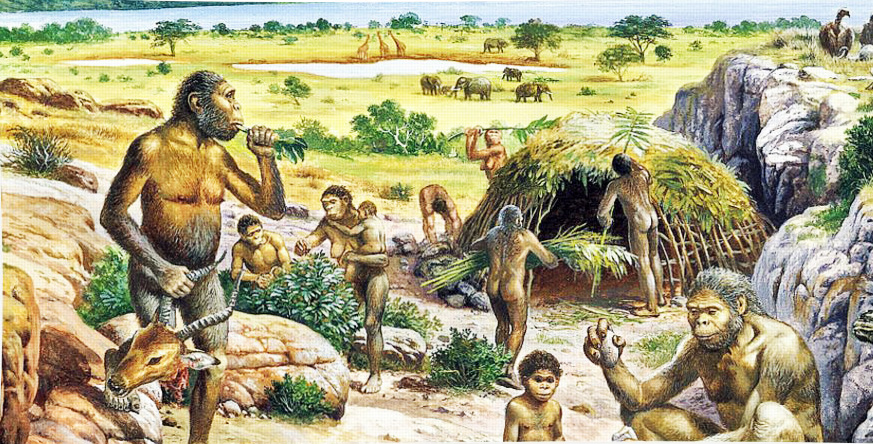
The Age of hierarchical variety
From 9K BCE to 3K BCE
This period began after the recent ice age had subsided and agriculture took root. With abundance of food and relief from nomadism, the human population grew in size. Along with increasing population emerged the dilemma of controlling social system variety by tribal leadership. The nobrainer fix is to add layers of authorities to the hierarchy to suppress the variety of the producers by enforcing rule-based behavior by threats of punishment. During this Age, the few examples of entitled authoritarians menacing society were still remote from most producers, who were farming far away from the palaces, separated by muddy dirt roads. While most of the population remained connected to reality, as all producers must, the consumer high potentates turned their attention inward, to maintain and enhance their privileged social status as tax collectors and to run the beer factories.
The Age of human civilizations
From 3K BCE to 1750 CE
With the development of civilizations came the the stacked hierarchy social system. It consists of the upper hierarchy of consumers authorized by law and tradition to rule the organization from the top with the producers working away voluntarily at the bottom, provisioning everyone else. This Age was marked by non-stop intertribal warfare. Separating these social classes is the MitM level. Since history records that every Plan A civilization that flourished went extinct, it is important to understand why the tall-hierarchy system progressively degenerates. Since it is clear that personality has nothing to do with it, the cause must reside in human nature, Stone-Age version, the only one available.
Eventually the entitled consumers, who can’t produce, can’t extract entropy, run out of provisions. So much for the value of entitlement in Nature’s operational reality. The ruse of entitlement which works so well on the human subconscious, Stone Age model, doesn’t work at all on indifferent Nature.

The Age of rapid context change
From 1750 CE to present
The industrial revolution brought the most rapid change to the context of social operations in humankind history. Since 1750 there has been no breather for natural, high-viscosity social system adjustment to take place. A human nature that evolved when the social conditions remained constant for a million years included no provision for adapting to rapid context change, resiliency. As the size of institutions increased, the numbers of entitled authoritarians increased. Some organizations proudly host more than twenty layers of entitled consumers populating the chain of command.
In recent decades, the rate of social context change has been so high, entitled consumers have have gained control of the collective’s wheel house. Accordingly, the ruling class, disconnected from reality, is setting the rules of social behavior for the populace, also disconnected from reality. Keep in mind that 97% of the population has no idea of how they make the choices of action they execute. These days we wonder about the 3%.
The producers can’t help but take notice of the new surge of hostility from the oligarchy. The current wave of intense fear-mongering is too unhealthy to be sustainable. It wouldn’t be the first time the producers stranded the entitled consumers.

The two regimes of Plan A
All regimes of Plan A are on exhibit 24/7. Once you know the mechanisms of action (MoAs) and the associated clues to look for, its repertoire of behavioral patterns can be observed everywhere.
Category one: producers
Regime one covers the globe as farmers, herders, master/apprentice, and small business. There are no attributes of Stone Age human nature or mathematical physics that prevent a flourishing production-centered regime. By absolute necessity, producers are reality-centered. Variety for dealing with unforeseen disturbances, resiliency, is sufficient.
Category two: consumers
Entitled consumers function in reality denial. When the 2½ rule kicks in, the dynamos of dysfunction are set into motion. With loss of proximity, it becomes impossible for the head shed to maintain requisite knowledge of operations. When the head shed finds out they are powerless to deliver prosperity, panic hits and the imposter syndrome sets in. The title of supreme commander only translates into the social power and legal right to harm the producers. That’s 21st century social intelligence from our Stone Age genome for you. Consumers in authority deny the reality that punishing the producers who supply their needs is counterproductive.
Imposter syndrome > 70% of ruling population is afflicted. Common signs of imposter syndrome include:
- Self-doubt, insecurity
- Irresponsible for results
- An inability to realistically assess competence and skills
- Attributing success by others to external factors
- Berating performance by others
- Fear that you won’t live up to expectations
- Fear you will be found out
- Setting very challenging goals and feeling disappointed when you fall short
The following subtle mental habits tend to be primary drivers and maintainers of imposter syndrome, self-test:
- Reassurance-seeking is the habit of looking to others to alleviate your anxieties or insecurities. While reassurance-seeking—and the reassurance you often get as a result—feel good in the moment, it tends to perpetuate imposter syndromes long-term. When you habitually look to other people for confidence and validation, you miss out on the opportunity to do so for yourself. And if you never validate yourself, you’ll never truly believe that you’re competent enough.
- Mind-reading is the mental habit of assuming you know what other people are thinking, especially about you. When you imagine that your boss knows you’re a phony or that your supervisor can see through you and see all your insecurities and doubts, you’re making assumptions based on your imagination rather than facts in real life. This leads to increased anxiety and other unhelpful habits like reassurance-seeking or catastrophizing.
- Hypervigilance is the tendency to be on the lookout for danger and threat. While this is normal in times of genuine danger, it leads to chronic stress and insecurity when it becomes the default way of operating. Furthermore, hypervigilance can turn into a self-fulfilling prophecy because we tend to be more aware of, and then fixate on, otherwise small or inconsequential mistakes or doubts.
- Rumination is the mental habit of dwelling on and getting stuck thinking about past mistakes or failures beyond the point of helpfulness. Of course, some amount of reflection on our mistakes in the past is helpful, but when we get stuck ruminating endlessly on mistakes it biases our thinking to become overly negative and self-critical.
- Emotional reasoning is the habit of making decisions based on emotions and feelings (intuition) rather than evidence and fact. Because people who struggle with their imposter syndrome often feel like frauds, emotional reasoning tends to lead them to make decisions in-line with this feeling.
The head shed challenge becomes how to maintain the illusion of entitlement of production surplus it does not produce. Those able to become entitled authoritarians are quite capable of such deceit. Infection with the imposter syndrome, however, ruins their self-image and sense of infallibility. Choking on angst, they don’t even trust themselves. The first victim of angst is robbing your energy to reason.
The convention in use employs its authority to punish, to create fear in the producers. Fear mongering triggers the Stone Age mind’s compulsion to move back into the herd, forming a bait ball. To hold on to their entitlements, all the head shed has to do is terrorize the producers. The whole pattern of social dynamics in play is psychological, subconscious human nature. As plummeting producer health attests, there is no conscious-mind intervention in the madness.
Regime three: too big to fail cannot avoid failing
Above six tiers in the hierarchy, there is no longer any change in the Plan A repertoire of behavior. No matter how many tiers are added, there is no meaningful variation in the performance dynamics. That is why all “tsar” installations by governments were total failures from day one. These tragedies prove the intrinsic disconnect between bestowed authority and the power to get good remedies implemented. Every tsar ends up afflicted with a serious case of the imposter syndrome. Like M&A, no lessons are ever learned.
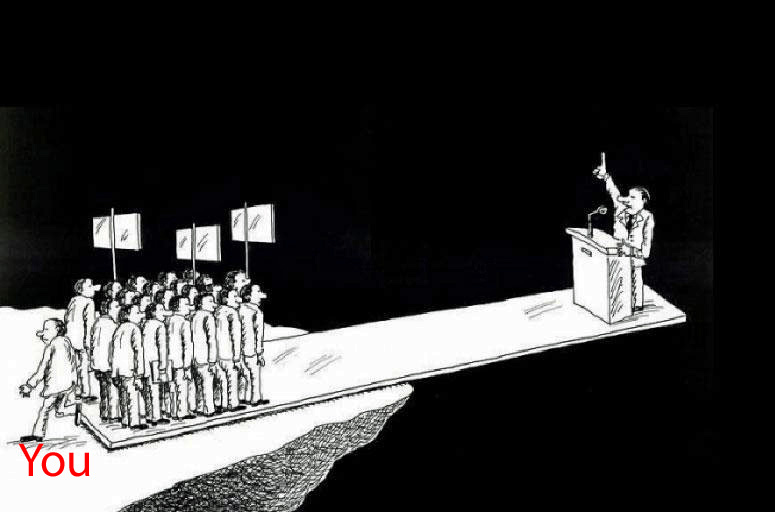
Framework of the mechanisms of action of Plan A
For the case hierarchy ≥3 levels, the 2½ rule decides context and human nature matters.
OD Starting Situation
Triggered by the 2½ rule
- Head shed disconnect from the producer’s operational reality
- Context-forced depersonalization
- Advent of entitled consumer class, rule-based behavior, class distinctions
- General staff installation
- Loss of individual control to exercise inalienable rights
- Abrupt changes in operating culture
- Loss of responsibility for consequences (a society loss), for organizational prosperity (survival)
- Ca’canny of producers
- The undiscussables period (Argyris) of 3D corruption commences
- Imposter syndrome appears
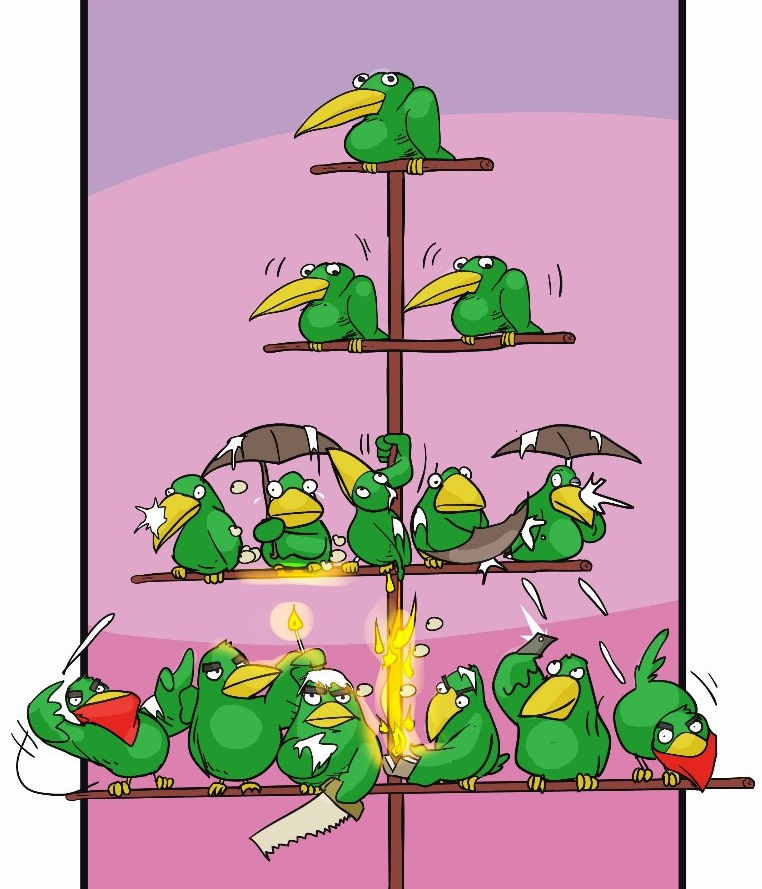
OD Escalation phase
- Dysfunction increases with time
- Turnover >36%, 2nd Law ignored
- Rule-based behavior, groupthink
- Responsibility for organizational performance evaporates
- Corruption ubiquitous
- Imposter syndrome prevalent
- Head shed discovers authority ≠ positive social power
- Deception and producer subjugation
- Achievemephobia
- Fear mongering prevalent
- Bait ball forms
- Subjugation of producers by entitled consumers
- The undiscussables are undiscussable
- Entropy extraction impossible
- Nash equilibrium prevents remedial system change
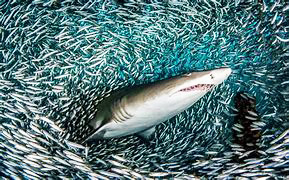
OD Climax phase
- No further operational changes with added levels, time, or increased turnover
- Fear mongering at maximum
- Bait ball formation 24/7
- Rule-based behavior, incapacity to extract entropy, the 2nd Law rules context
- Full 3D corruption of the organization, two-tier legal system provides perpetrator immunity
- Zero responsibility for consequences, protection of stakeholders
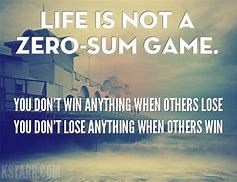
Extinction by entropy suffocation
Liquidation of organization, consumers and producers

Scrutable connectivity
That social behavior is entirely psychological is beyond dispute. In the “soft” disciplines, such as psychology, the normal mode of progress consists of experimenting with graduate students and endlessly debating the meaning of the results. As a trustworthy scientific process, validation by opinion has nothing to recommend it. Look at the track record of astrophysics. They didn’t even know they didn’t know about the existence of dark matter.
What is exceptional about the “hard science” approach to mechanisms of action, is that every concept and every facet in it, is scrutably connected to the laws of nature and invariant human nature. No connection to opinion is involved. The Popper-blessed result is that everything in the concept of social behavior is observable in real time and demonstrable in your shop.
Without dependency on bureaucracy and opinions as milestones, progress is much faster and much quieter. After all, life itself is connected to natural law. Plan A and Plan B both are connected to indifferent natural law, of course. Plan A, government by compulsion, features attempts to defy natural law. Plan B features the putting of knowledge of natural law, human nature, and social intelligence to work in self-government.
Discussion
Comprehending the non-linear path of discernable fact, evidence, and reasoning that accounts for Plan A formation and maintenance is not for everyone. We were fortunate in this regard to have a large, running supply of organizations to run tests on. The various mechanisms of action (MoAs) of social behavior in the storied repertoire of social behavior called Plan A are described here so you can see the Plan A motif, the MoAs of business as usual in action. They are in your face, all day every day.
As producers well know, none of this causal stuff can be learned for you. Entitled consumers have a collective blind spot regarding the MoAs of social reality that cannot be removed. The blind spot is massive enough to protect the biggest of blunders in choice making by the ruling class (Argyris).
There are two core Natures determining social behavior: human nature (genome) and natural law. Such natures do not change their influence according to the context. Both invariant natures play a role in every social action. While the interaction of components is seldom simple, the elements themselves are quite understandable. All Plan A social behavior is directed by the subconscious mind, instantly and effortlessly.
Since only subconscious minds are involved, it means human nature (Stone Age model) is calling the shots. Entitled consumers acting socially only on their subconscious minds drag everyone else into the abyss. Using the MoAs, the combined invariance of Nature makes Plan A social dynamics entirely predictable. Rudolf Starkermann spent decades doing exactly that, putting the matter beyond dispute. His graph below summarizes the lot.
When the conscious mind is calling the shots, the trajectory of social action depends on exercising prudence, on conscious thinking. Without intelligent choice-making, however, the unprepared conscious mind does no better than business-as-usual subconscious. Leaving choice-making up to your subconscious mind takes no conscious effort whatsoever. The subconscious mind always chooses first, instantly, and cannot be prevented from doing so. Control is by risk-informed veto of the conscious mind. That’s it.
Choosing prudently and knowing it consumes large amounts of cranial glucose and the elements of prudence never take a holiday. Because cognitive exertion is an energy hog, consumers naturally choose the path of least cognitive effort. Producers have no choice but to stay with reality and that takes cognitive exertion.
The trigger that releases the Plan A menace is pulled by the 2½ rule. It announces to those in the know that the big Kahuna of the enterprise, having no intimate contact with the operational reality, cannot make choices based on evidence and reasoning in a timely manner. He is too far removed from the brute truth of the front lines to make good choices for the collective and everyone knows it. Being indifferent, the 2½ rule cannot be avoided, neutralized or defied. The situation is drowning in GIGO.
While organizational dysfunction (OD) itself can exist at any level in the hierarchy by incompetency and ignorance, if the hierarchical stack of authority exceeds three in number, OD has to be present. It is invariably connected with the onset of corruption. As soon as there is a supervisor of the supervisors of the keystones, the laws of ecology take over and OD emerges. Personal characteristics have nothing to do with forming the OD motif, an oligarchy.
It is important to understand the history of Plan A and how changing operating contexts changed Plan A social dynamics. The step changes are reversible with the size of the collective. When the first city, Gobekli Tepe, imploded under Plan A and the producers went back to the hunter/gatherer life, the tyranny of Plan A evaporated.
Your way-of-life choice today is simple. If you go with your Stone Age subconscious mind’s intuition, you will get what your peers are getting.
Entitlement justification
The justification that oligarch consumers use to maintain their exalted status is by fabricating and grooming their entitlements by zero-sum competitions. The razzle dazzle used exploits idiosyncrasies of Stone Age human nature. The MoA begins by generating fear in the producers by the oligarchy. The angst of fear prods the producers to cling tighter to the source of their fear, losing individuality in the herd, straight out of the Stone Age playbook. That’s right, the producers provision the oligarchs who fabricate the same fear they, the producers, are reacting to, seeking security in the bosom of the herd and forming a bait ball of individuals. The bait ball is devoured en mass by the Establishment partnering with Silicon Valley for the purpose of abolishing your inalienable rights. Step back and think and you can see this travesty play out before your very eyes.
The entitlement treachery is surprisingly easy to pull off on the Stone Age subconscious mind. Fear is highly contagious and the events of Plan A social living provide plenty of things to fear. That is why the Establishment has always controlled the media. The end stage dials in when the 2nd Law eats away all the rules and delivers enough entropy to drive the system unstable. Since the Plan A organization is incapable of entropy extraction, social instability cannot be avoided. The collective suffocates by entropy.
With two social system mindsets in opposition, one for producers and the other for entitled consumers, organizational dysfunction (OD) is inevitable. Authoritarians immediately make things difficult for themselves by flogging the producers. The conservation laws of Nature do not step aside for anyone.
As the upper hierarchy locks in to social status by authority, forming an entitlement-based oligarchy, it triggers a cascade of social system reactions. The world of production becomes eclipsed and subjugated to consumer-based functioning that is oblivious to reality. The Entitlement Generation, devoid of social intelligence, is the last phase of species extinction. Without connection to the operational reality and unable to learn and do what it takes to extract entropy, sooner or later the entitled oligarchs run out of provisions.
3-D corruption
When OD sets in, corruption is set free to grow by reciprocity in all directions. All needs of the winners are supplied by the bait ball, the losers. Plan B has no OD, no bait ball, no corruption, no losers no zero sum competition.
The instant the entitled consumers dominate by treating the producers as inferiors, by their consent, the subconscious minds of the producers goes on Ca’canny and efficiency of work drops like a rock. When the head shed announces a merger or acquisition, for one example of corruption, productivity immediately drops below zero (sabotage). You’ve been there.
In time, the entitled consumers realize the only tool they have to maintain subjugation of the producers is fear of punishment. Often the zero-sum rut over authority is settled by punishing the producers. The more you learn about the consumer/producer relationship in the operational reality, the easier it is to understand why head sheds dependably shoot holes in their own boats.
In dysfunction mode, entropy cannot be extracted and things start going to hell in a handbag. Rule-based operations makes dysfunction unavoidable no matter the personalities involved in the head shed. Invariant human nature and mathematical physics take over the shaping of social behavior throughout the hierarchy.
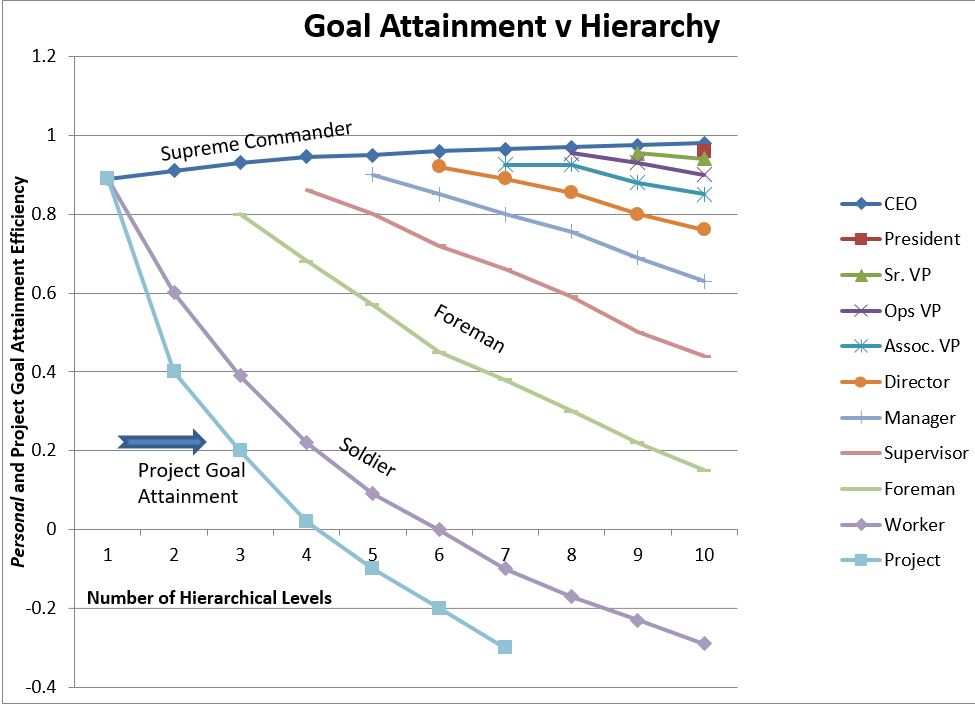
Performance worsens with time above 4 levels. The Nash equilibrium keeps it that way.
Over six levels of hierarchy, performance dynamics no longer change with levels or time. The segregated chains of command do not link up. Rule-based behavior is Nash reinforced.
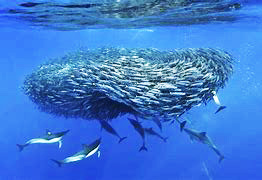
Views: 60

